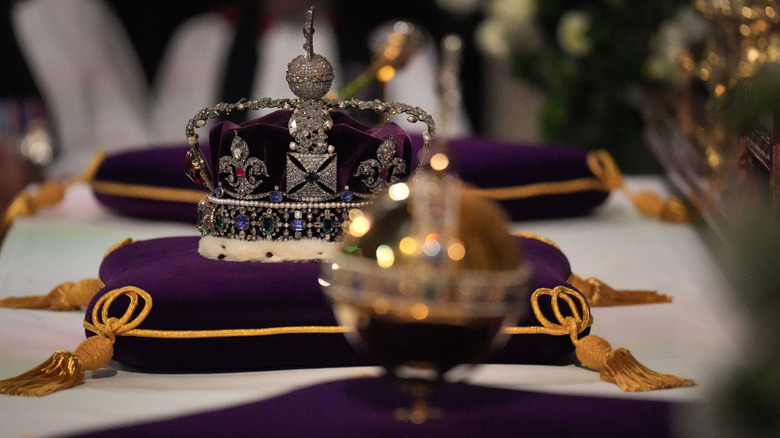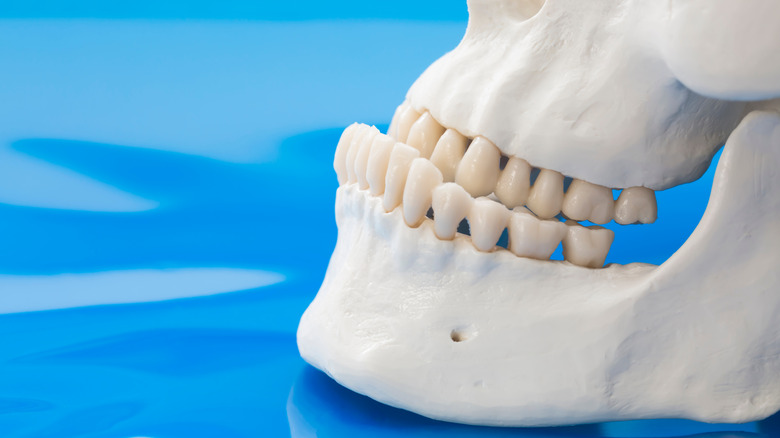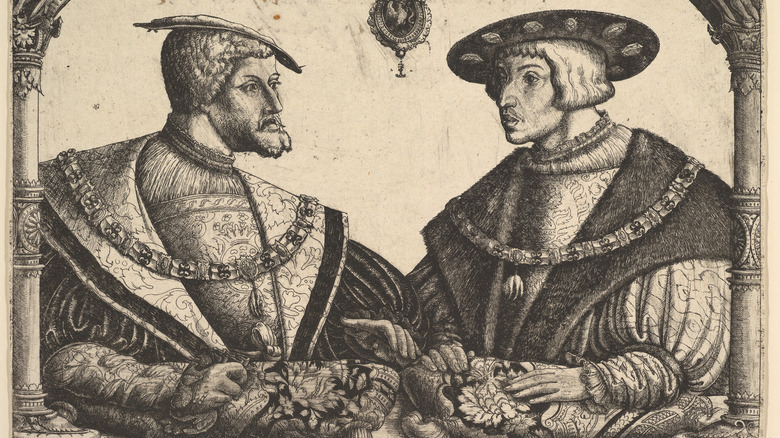We Finally Know Why This Royal Family Shared A Distinct Facial Feature
Following Queen Elizabeth II's death, questions about lineage and the monarchy's family tree began circulating on Twitter. Before the queen's husband, Prince Philip, died in 2021, the two were married for 74 years, subsequently leading some to believe the queen died of a broken heart. The couple was also related; they were third cousins, both sharing royal blood as descendants of Queen Victoria, as noted by Distractify.
While such marriages used to be common among royals, the publication notes that they ended among the Windsors after Elizabeth and Philip's union; future generations of the family married outside the gene pool. But the discussion of mating in another royal family hundreds of years ago is still a source of fascination, with some TikTok creators focusing on the history of royals marrying relatives dating back to as early as the 1500s.
In fact, research shows that a certain physical feature associated with a historical royal family may have been the result of cousin marriages.
The prominent Habsburg jaw could be the result of royal inbreeding
If you were to look at portraits of royals like Philip IV and Charles II of Spain, who were a part of the Habsburg dynasty and ruled in the 17th century, your eyes will most likely be drawn to their protruding chins. That facial feature, which can be seen in portraits as illustrated by Smithsonian Magazine, was shared amongst kings and other members of the royal family.
This discourse took a research pivot in 2019 when "Annals of Human Biology" (via Taylor & Francis Online) published a study looking at 15 individuals with Habsburg ancestry. The study set out to determine if inbreeding in the Spanish family was a result of strong, inherited facial features. Health Digest breaks down these findings, likely attributed inbreeding as a factor for the "Habsburg jaw."
In technical terms, researchers found that both mandibular prognathism — the scientific moniker for a jutting jaw — and maxillary deficiency — a skeletal deformity that manifests as an underdeveloped jaw — were positively found in the study. Conclusions from the research suggest that homozygosity, a state of having identical alleles from each parent, creates offspring with a recessive gene. In the case of the Habsburg family, this means that the dramatized jaw was present in multiple generations.
Genetics professor Roman Vilas from the University of Santiago de Compostela confirms this with the findings of his study, saying in a statement: "We show for the first time that there is a clear positive relationship between inbreeding and appearance of the Habsburg jaw."
How inbreeding caused the Habsburg dynasty to ultimately collapse
A bulging jaw, or as History Extra nicknames it more appropriately, the "Habsburg Jaw," passed down from generation to the next was the last of the Spanish Habsburg dynasty's problems. National Geographic reported that while the family was on top for centuries, by the time the 18th century rolled around, it all came crashing down.
Inbreeding is believed to be a result of the demise, as gnarly medical conditions plagued rulers like Charles II of Spain, who was the last in the lineage to rule, after dying at the age of 35. The popular magazine detailed that toward the end of his life, Charles II was both physically and mentally disabled, in addition to experiencing epileptic seizures, amongst another myriad of concerning health conditions. By this time, the family marrying and mating inside the family had been occurring for 16 generations, historians found.
Unfortunately, King Charles wasn't the only victim of inbreeding. In 2009, one researcher concluded by observing death records that children in the Habsburg family rarely made it past childhood, and when they did — like the last reigning king — they were unable to live healthy, able-bodied lives due to recurring genetic disorders.


